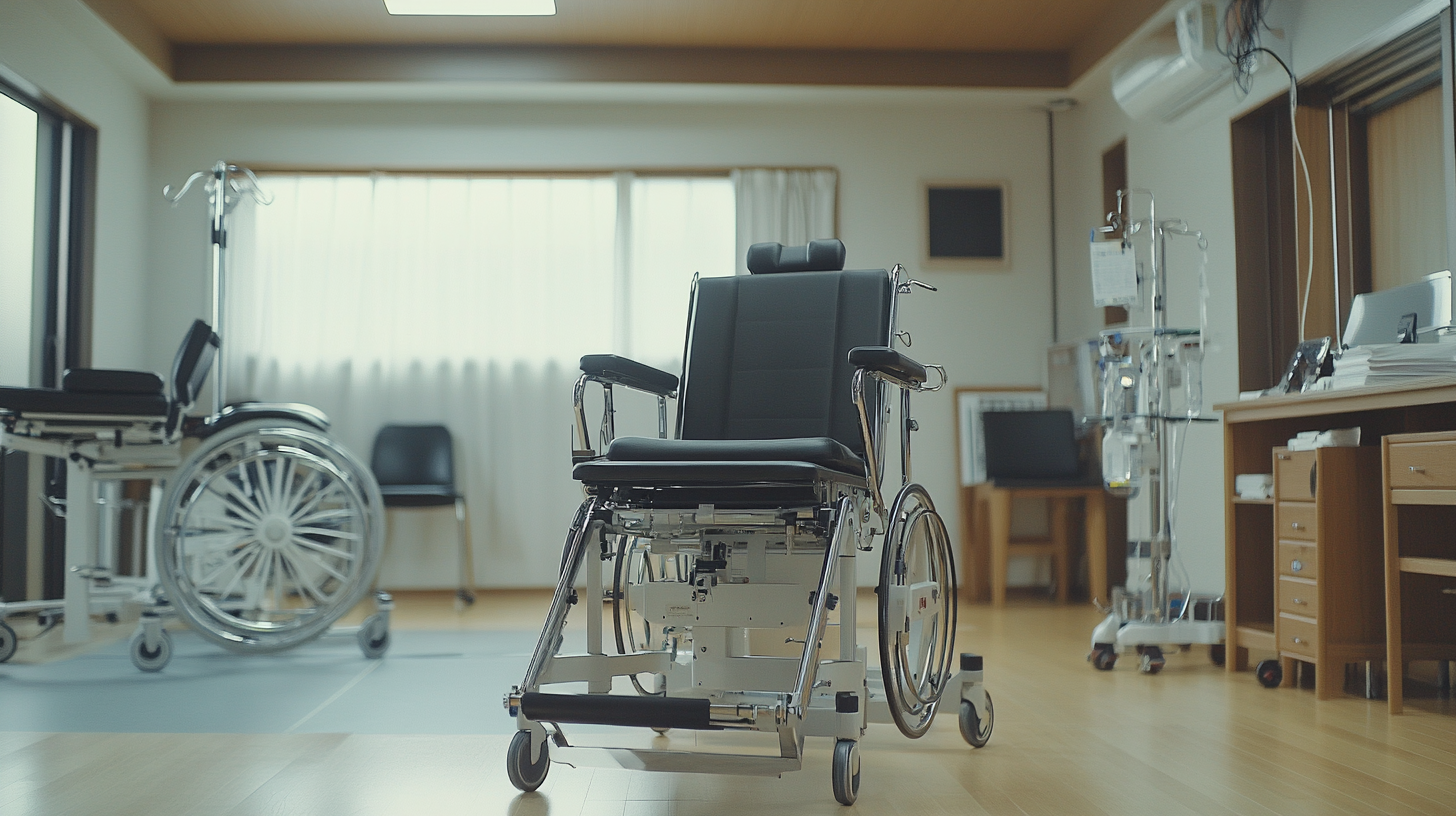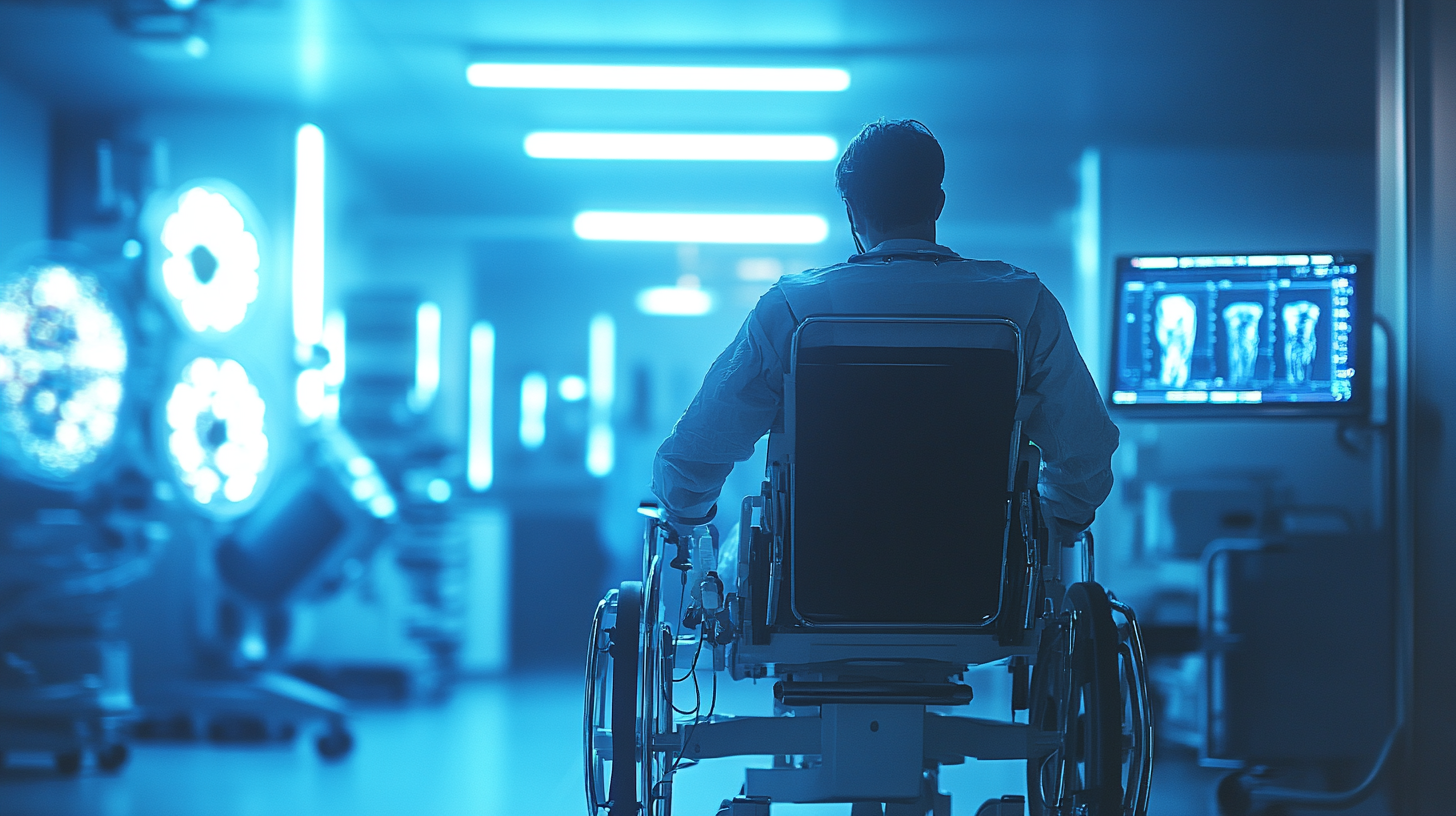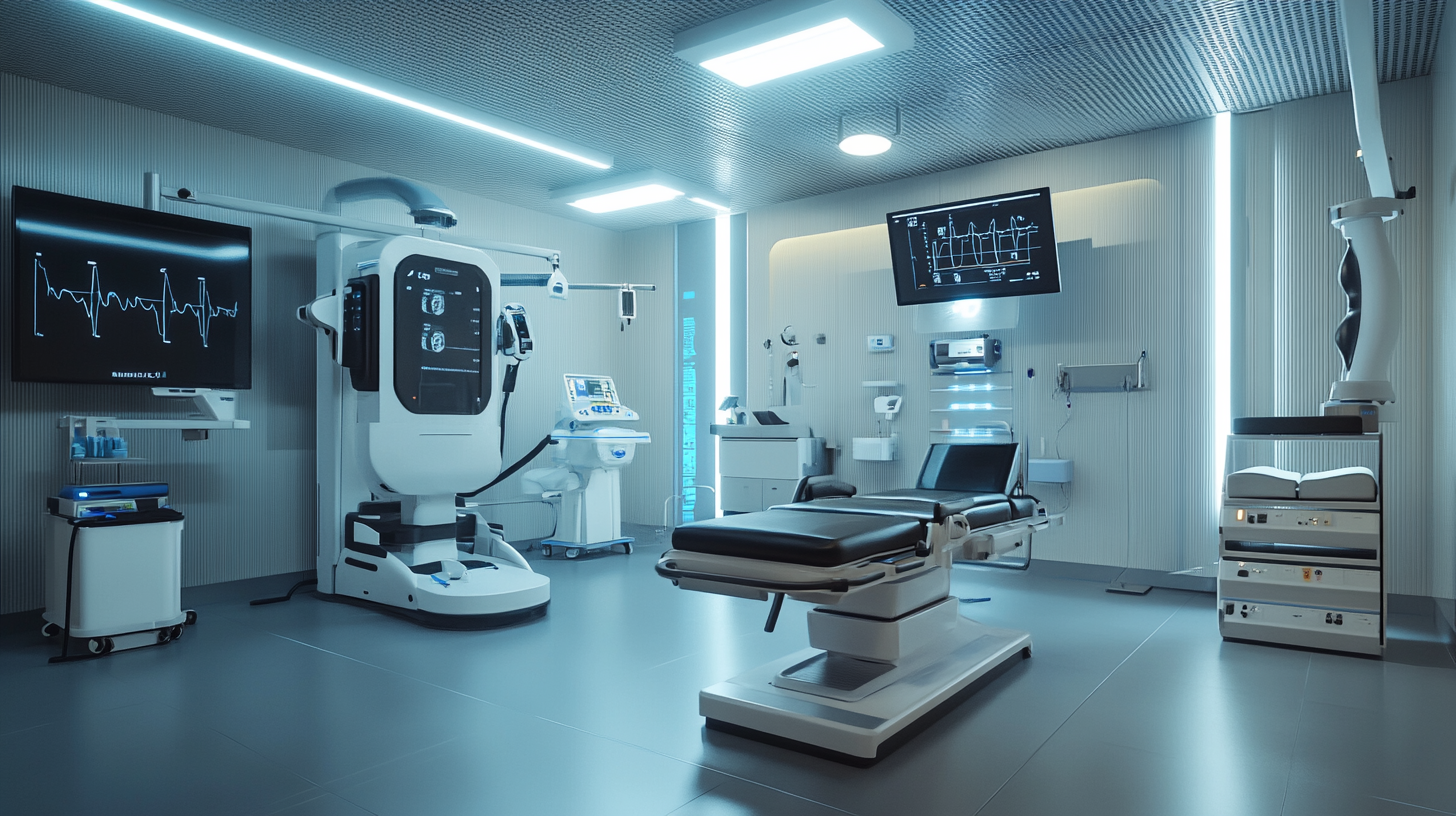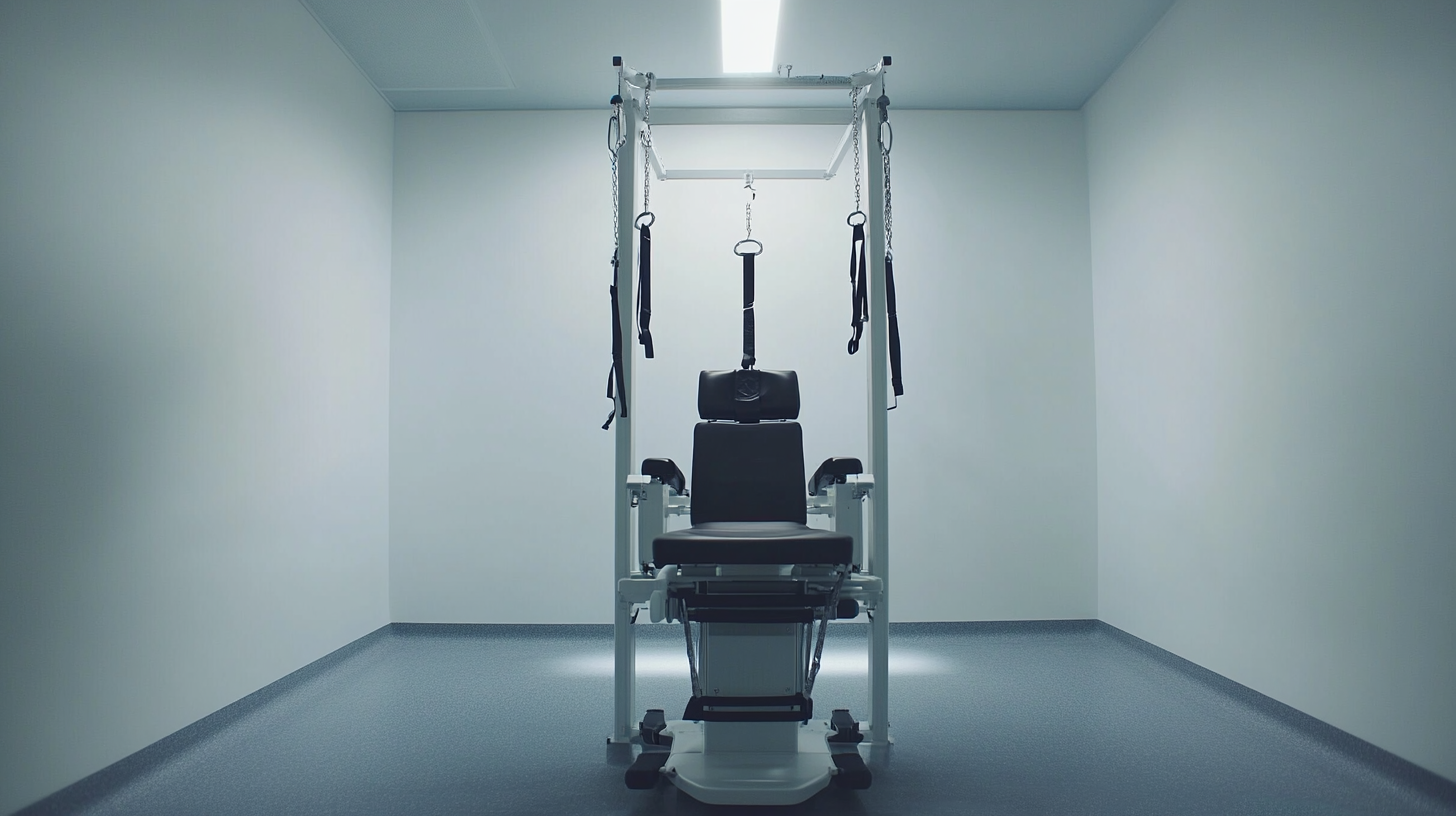Exploring the Unique Features and Applications of Rehab Medical Equipment Across Different Needs
The rehabilitation industry has seen some considerable developments in the recent past, particularly with respect to rehab medical equipment. The global rehabilitation equipment market size stood at an estimated $14.2 billion in 2020 according to a Grand View Research Report, with growth projected at a CAGR of about 6.6% from 2021 to 2028 for this market. The basis of this growth has been attributed to increased prevalence of chronic diseases coupled with growing aging populations and general awareness with regard to physical rehabilitation. Consequently, the demand for specific rehab equipment that meets various needs of patients is growing.
It plays a very significant role in rehabilitation for conditions ranging from orthopedic injuries to neurological disorders. Most of the innovative technologies such as robotic-assisted devices and virtual reality are redefining the traditional rehab for accuracy and efficiency. Other studies show that customizing rehabilitation procedures can ensure prompt recovery and improved patient outcomes. This blog will provide unique characteristics and applications of Rehab Medical Equipment and how those advancements meet different patient needs in the health sector.

Innovative Technologies in Rehab Medical Equipment for Enhanced Recovery
The revolution in recovery and rehabilitation is brought forth by the innovative technologies in rehab medical equipment. Some factors that contribute to these advancements in making a difference in rehabilitation include efficiency in therapeutic practices and accommodating the various needs of patients recovering from injuries, surgeries, or chronic conditions. Examples of such breakthroughs are robotic-assisted therapy devices. These advanced technical aids are gaining prominence among therapists for their precise and consistent movements in giving very accurate assistance to patients retraining motor skills. Most robotic devices out there provide the therapist with feedback on the treatment session so that the session can be further customized according to the patient's individual progress, thereby improving the effectiveness of recovery. Another big development in rehab medical devices is incorporating virtual reality (VR) environments into therapy sessions. VR technology immerses the patients in an engaging and interactive experience that often helps motivate their participation in the rehabilitation process. This modality is particularly suited to those undergoing physical rehabilitation, as it can be used to simulate tasks from the real world to exercise cognitive functions and concentration. Furthermore, the distraction-free state promotes maximum engagement while limiting discomfort during exercise. Wearable technology is also changing the face of rehab. Smart sensors and devices monitor a patient's movements and provide critical data for follow-up on his/her progress. This information empowers healthcare professionals to change the treatment strategy based on real-time data and, thus, engaging patients in their own recovery process. Patients who can see their improvement metrics feel more motivated and engaged, thus achieving better outcomes. The future of rehabilitation is bound to become more efficient, personalized, and accessible with further innovations in the coming years.

Tailored Solutions: Customizing Rehab Equipment for Diverse Patient Needs
In the field of rehabilitation, tailored medical equipment plays a major role in effectively addressing the diverse individual needs of different patients. A recent report by World Health organization estimates that over 1 billion people around the globe require some sort of rehabilitation services as it evidently points towards a great demand for tailoring rehabilitation services for individualized solutions. Rehab medical equipment involves the different categories of rehab equipment ranging from therapeutic devices to mobility appliances that continue to be manufactured adapting specific and unique physical, cognitive, and emotional characteristics of patients during recovery.
Customization of rehab equipment also contributes to the improvement of rehabilitation experiences and result outcomes. For example, in accordance with a study from Journal of Rehabilitation Research and Development, personalized therapy instruments could reduce recovery times by 30% over conventional equipment. Such a finding reinforces why focus must be placed into patient-centric care as in adjustable walkers, individualized seating solutions, and specialized therapy machines built by particular user profiles and rehabilitation goals.
In recent times, technology has also been the sky that has opened new designs of rehab equipment. It is increasingly important now to have intelligent technology in rehab equipment that monitors patient progress and gives feedback in real time. Research shows that devices equipped with such features could produce a 40% increase in user adherence to rehabilitation regimens. This ergonomically designed equipment contributes not only to the physical process of rehabilitation but also goes a far way in self-development and the development of self-confidence among patients.

The Role of Rehab Equipment in Post-Surgery Recovery and Rehabilitation
Complementary in post-surgery recovery and rehabilitation exercises, rehabilitation equipment significantly impacts patients' health journeys. Yet since advanced medical technology has come across with a number of new rehab tools that have been adopted in relation to old and new technologies used for various needs. For instance, a recent study reported that home rehab, especially with digital biofeedback systems, appears to be very effective compared to in-clinic therapy in patients after knee surgery. This by very much encourages and favors the use of telehealth for those patients who want to make their recovery processes easier and more client-centric.
Moreover, the sports medicine industry is touted to increase dramatically in the future, signaling that most novel rehabilitation regimes and equipment are now under demand. Emerging segmentation should include rehabilitation equipment specially designed for use by orthopedic or cardiology patients recovering from specific surgical procedures. At-home devices intended for rotator cuff repair are rapidly redefining standards of recovery for the outpatient setting.
Focus on improving rehabilitation strategies will provide a path in recovery and even further the gains in general quality of life as healthcare transforms. The continuum of care is between skilled nursing facilities and specialized rehab technology, bringing together surgery with patient wellness.

Assessing the Impact of Rehab Equipment on Patient Mobility and Independence
Rehabilitation medical equipment is critically important for improving a patient's mobility and independence, especially for an individual who is post-stroke or suffering from long-term illnesses. It is revolutionizing stroke rehabilitation with modern advances recently seen in soft robotics, which offer adaptive support using mobile systems for persons with difficulty in moving around. Moving naturally enables a patient to re-learn motor skills usually attenuated after a stroke and promotes the independence of the patient in daily activities.
Furthermore, smart devices have been developed as empowerment technology to support people with disabilities. These new devices make mobility easier for the users, so they can do things normally too difficult for them. For instance, incorporating exercise and socialization into their day-to-day routines in the lives of older adults also makes them possible to continue to live in their environments. Therefore, this approach does not just keep them well physically healthy but improves their quality of life.
Additionally, healthcare professionals are exploring more innovative approaches and technologies to improve the mobility and rehabilitation of patients. In this regard, workshops discussing recent breakthroughs in rehabilitation equipment train occupational therapists on how better patients can be served. Early functional rehabilitation indicates movement from a sort of 'eyewash' therapy through to innovative interventions, furthering rehabilitation in an early proactive way, thus managing mobility challenges effectively and from very early on, assuring further the patient's autonomy and wellbeing.
Future Trends: The Evolution of Rehab Medical Equipment and Its Applications
This is the evolution of rehab medical equipment. Healthcare technology nowadays advances in such a high speed that rehabilitation equipment is gaining greater need. As the market has started integrating wearable medical devices, it shall shift generally toward more intelligent, lightweight, and user-friendly solutions. Not only do these attributes apply to the devices themselves, but they also refer to the more personalized patient care processes toward rehabilitation-now even more specific according to various medical needs.
The past years' trends have indicated tremendous growth in the market for medical-grade wearable devices, which exceeds an estimation of about 700 billion yuan. With a huge budget being invested into research and development, the convergence of novel technologies with real application functionality is becoming ever clearer. Most marked by this expanding sector are the numerous funding start-ups that have found spaces to bridge products for aging care or rehabilitation that focus specifically on that category.
Academic partnerships are also an example of such activity, of which Xi'an Jiaotong University's School of Life Sciences offers a good illustration. It outlines how much educational know-how will have to form part of this evolving landscape. By placing students in an environment where they can be active participants in the healthcare sector, invaluable lessons will be learned to fuel future innovations and applications of rehab medical equipment. Education, research, and markets will most definitely influence future development of rehabilitation technologies, aligning them with new trends in healthcare needs.
